The Fed Isn’t Having a Lot of Luck Cooling this Labor Market
This is still an astonishingly tight labor market: astonishing because the Fed has hiked rates for a year and not much has changed.
By Wolf Richter for WOLF STREET.
When we compare this labor market to the labor market of the Good Times before the pandemic, we see that job creation has recently been running at about double the rate as in 2016 through 2019, that the number of unemployed people looking for a job is near historic lows, that average hourly earnings of non-management workers are still rising at over 5%, about double the rate during much of the Good Times, that the labor force participation rate of 24-to-54-year-olds is now the highest since before the Great Recession.
And we see that even in the beleaguered Information sector – the hotspot of layoff announcements – employment is ticking up again after a small dip and is far higher now than during the Good Times, and that the unemployment rate in the Information sector, though it has ticked up, remains at the low end of the range during the Good Times.
In March, 236,000 jobs were created by employers, according to the Bureau of Labor Statistics today. Over the past three months, 1.34 million jobs were created. This three-month total, which irons out the month-to-month variability, is nearly double the average three-month rate during the four years of 2016-2019 (of 549,000). Compared to the Good Times job market, this labor market is still hot.
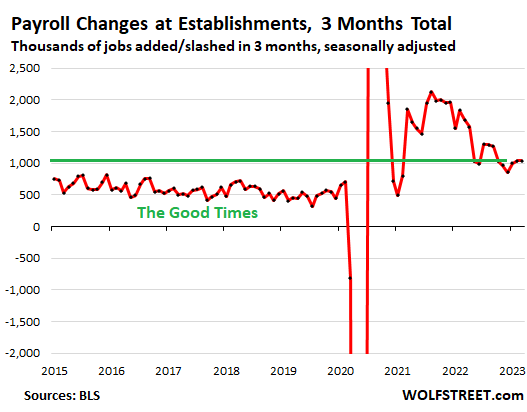
The labor market may even have heated up in recent months, based on the data obtained from households, which show that total employment – payroll-type jobs at establishments plus the other types of work, such as the self-employed – has shot higher over the past four months, after languishing for part of 2022.
In March, the number of workers reported by households jumped by 577,000. Over the past three months, the number of workers jumped by 1.65 million, which is roughly three times the average three-month total in 2016 through 2019 of 565,000. These are huge numbers:
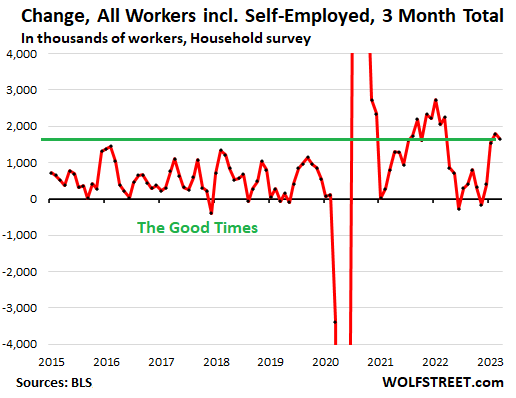
The number of unemployed people who are actively looking for a job dipped to 5.84 million in March and has been in the same historically low range for months.
The three-month moving average of the number of unemployed people through March ran at 5.82 million. There was only one month during the Good Times, in February 2020, when the three-month average dipped below that:
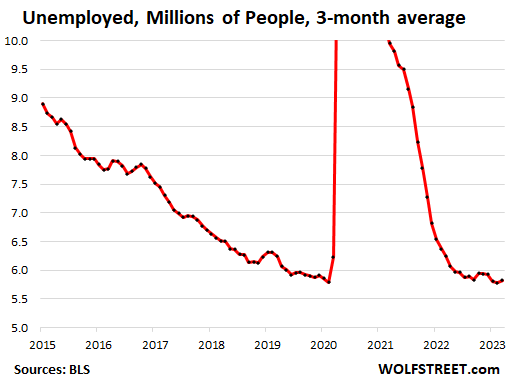
The prime-age labor participation rate – so people aged 24 through 54 either working or actively looking for a job – reached 83.1% in February and March, the highest since before the Great Recession. In terms of the three-month average, it rose to 83.0%.
The prime-age labor participation rate eliminates the complex issue of the so-called “excess” retirements that have bedeviled the labor force during the pandemic. In other words, people in their prime working age are strongly participating in the labor market, working or actively looking for work.
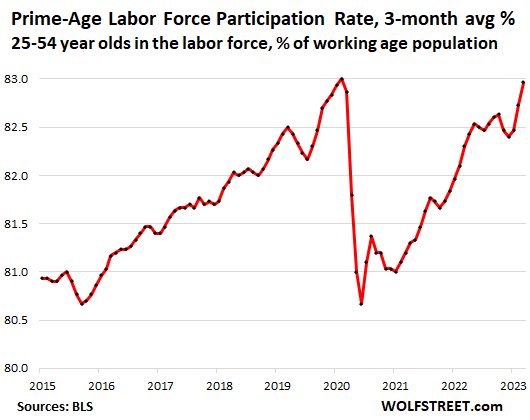
Average hourly earnings of employees in non-management and non-supervisory roles rose by 5.1% year-over-year, compared to much smaller increases during the Good Times. These are engineers, teachers, bartenders, technicians, drivers, retail workers, wait staff, construction workers, nurses, etc. in non-supervisory roles.
But here we see that some pressure is coming off, perhaps more driven by public rhetoric about a gazillion layoffs that may intentionally and successfully have intimidated some workers.
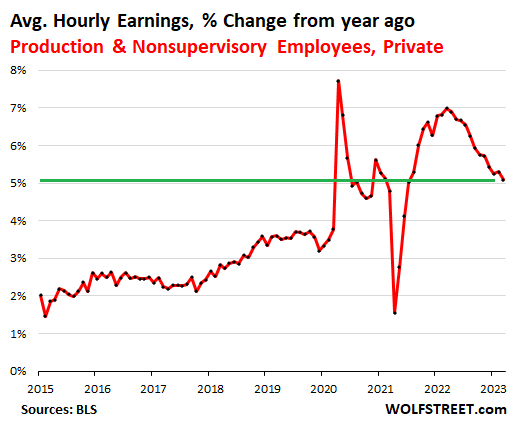
The number of employees in the Information sector rose in March to 3.09 million, after three months of declines. This is the hotspot of many of the layoff announcements in the tech and social media sector. But since the peak in November 2022, employment in that sector has dipped just 1.1%, and is still up by 6.4% from the peak of the Good Times in February 2020:
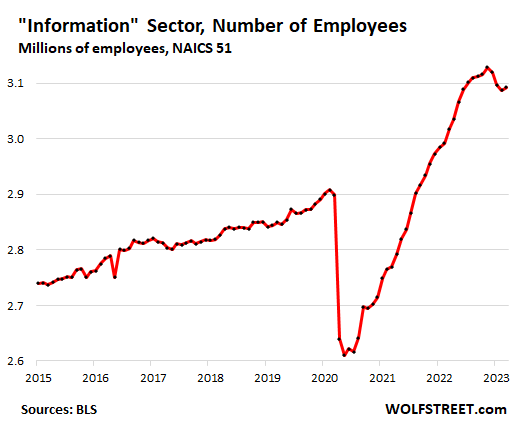
In this beleaguered Information sector, the unemployment rate in March dipped for the second month in a row, to 3.1%.
But the three-month moving average of the unemployment rate, which includes the January-jump (3.9%) and which gives us a better feel for the trend, rose for the third month in a row, to 3.4%. So even here, in this sector that is beset by all these global layoff announcements, the unemployment rate is still comfortably in the range of the Good Times.
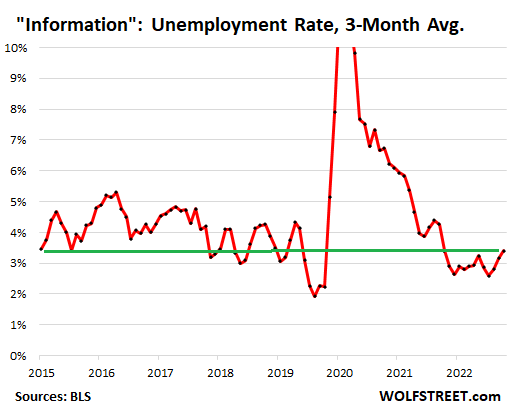
The Fed isn’t having a lot of luck cooling this labor market.
The labor market is just barely cooling off in some sectors, such as Information, and not cooling off in other sectors, and remains tight overall by Good Times standards.
Today’s data is confirmed by different types of labor-market data, including the number of claims filed for unemployment insurance, and actual layoffs and discharges (not announcements), voluntary quits, and job openings.
In other words, this is still an astonishingly tight labor market – astonishing because the Fed has been hiking rates for a year, and not much has changed in the labor market.
And so the Fed isn’t having a lot of luck cooling off consumer demand. A labor market like this means that consumers are working and making money, and incomes are rising, and they’re spending this money. And when consumers spend this money, as they’re doing, they’re helping to fuel inflation, and that’s what we’ve seen. And I’ve discussed it here: Consumers Got Whacked by Inflation, High Interest Rates, Layoff News, Asset Prices Falling from Lofty Peaks… And They’re Still Not Slowing Down.
Enjoy reading WOLF STREET and want to support it? You can donate. I appreciate it immensely. Click on the beer and iced-tea mug to find out how:

Would you like to be notified via email when WOLF STREET publishes a new article? Sign up here.
![]()
[ad_2]
Source link


